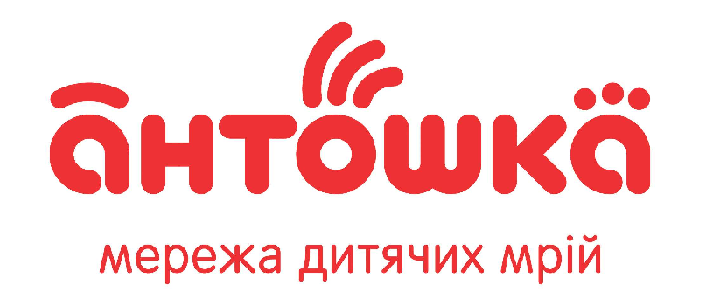
Visuals in corporate learning: how video and animation can help motivate employees
In the modern world, video and animation are taking center stage in the way we communicate information. Every year, people find it harder and harder to focus on long-form, textual, or printed instructions. Medical researchers have discovered that if a drug instruction contains only text, recipients will remember only 75% of the information, while if you add pictures, they will remember 95%.
The situation is the same with learning. Materials are much better and easier to remember when supported by visual sources. These can be infographics, illustrations, videos, and animations. The latter two work especially well. The reason is simple: our brains have gradually gotten used to information in the form of videos (TikTok, reels, etc.), which is why you should fill your training materials with videos and animations.
What are the main reasons for poor assimilation of learning materials by employees? How can you increase their motivation with visual sources of information? And what types of tools can help you create perfect videos and animations?
Why do employees absorb learning material poorly?
The main reasons for poor learning are uninteresting content, low attention span, and low motivation to learn. While attention span and motivation need to be improved individually (for example, through additional incentives), uninteresting content can affect all employees at the same time. How do you know if the content is not interesting? You need to review your training courses and analyze the quality of the materials.
Long lectures, longreads and boring information kill motivation. That’s why you need to find new and interesting approaches to presenting materials to your employees. And here’s where you can start.
Where to use video in learning: win-win solutions
1. Apply a microlearning approach: prepare short videos on the topics
-
Welcome presentation
Start the introduction to the company with a welcome video presentation. Have your onboarding training session include a short video that explains the history and goals of the company, introduces the new employee to basic information about the brand and their future workplace. Similar videos can also be used for corporate purposes: for example, during conventions and team building, or when rebranding a company. When you need to convey basic information quickly and concisely.
-
Product video review
Videos can also be used for product training. Prepare product video reviews. These should be short videos, 3-5 minutes long, about a specific product: they should describe its characteristics, applications, and features. Such videos can be used not only for onboarding training for new staff. It can be additional materials for existing employees to repeat and consolidate product information or learn about new products.
-
Processes learning
Videos are a great tool for learning about company processes. Create short learning videos about the stages of production, introduce employees to the behind-the-scenes of product creation, and add video instructions to each type of training to improve retention.
2. Use animations to add a game element to your learning (gamification)
-
Infographics
The easiest way to visualize data is to create infographics. Try to include animated infographics with the basic information that employees need in their learning.
This method will help to systematize digital data, statistics, etc.
For example, product sales results, changes in production, etc. Infographics can also be used to present instructions, tips for new employees, or even a short summary of courses. This way, employees can refresh their knowledge without taking the course all over again. Best of all, these infographics should be interactive, emotional, and have short text messages.
-
Badges
To motivate employees to learn, you should develop a system of rewards for achievements. This is where gamification and animation come in: create animated badges for your employees.
Badges are virtual rewards that you can give (automatically or manually) in LMS Collaborator to your staff for completing various stages of training, completing tasks, or completing certification. Each badge can be exclusive, which will emphasize the employee’s knowledge and encourage others to study more efficiently in order to get a similar one.
-
Animated elements as a component of learning materials
As we’ve already mentioned, the modern human brain retains visual information better. Therefore, do not hesitate to add animated elements to your learning materials.
These can be simple animations to attract attention (e.g., animated characters) or short gifs with memes or famous moments from movies that will help create a certain associative series.

Example of animation (Image source: ISTE)
-
Animation in dialog simulators
In addition, animated dialog simulators can also be used to create learning materials. This is a kind of workflow simulation that can be customized to reproduce very real situations that employees may face, with several options for the development of events. Such services allow everyone to try themselves as the main character, and depending on the answers, the service offers several ways to continue the story. This may be useful, for example, when simulating conversations between a sales manager and potential customers.
LMS Collaborator supports integration with BranchTrack, a European platform for creating dialog simulators. This is a simple and convenient editor for creating interactive simulations that allows you to immerse your employees in a real situation and make their learning as effective as possible.
Types of tools: video and animated visuals
-
Video editing software
To produce high-quality video content, it’s not enough to have a good camera in your phone or camera. To have a really good video, you need to edit it skillfully. That’s why we’ve selected a few tools that will help you create the perfect video for your learning.
1. Sony Vegas Pro — is a professional video editor for non-linear editing. Vegas does not require any specialized hardware, so it can run on any standard Windows computer.
The program enables stabilization of the frame, color correction, adding animation to the video, and creating titles and credits – just like in a movie. The main advantage of this editor is that it allows you to work not only with video, but also with sound.
Price: The program is paid, but there is a free test drive. The price depends on the available tools (from $11.99 to $24.99 per month for a subscription).

(The program’s appearance. Image source: https://pliki.pl/vegas-pro/)
2. Movavi — is a Windows program that allows you to process videos of different quality and sizes.
This application has everything you need for editing: a simple interface, many options, and a free version. Movavi lets you frame, trim, and add music to your videos with just one click. The program also includes a lot of filters, screensavers, titles, and transitions.
Price: The free version is limited in time and features: 7-day trial period, watermarking on the output video, and the ability to save only half the length of an audio file. The price depends on the type of editor (from $80 to $200 for a one-year license).

(The program’s appearance. Image source: https://www.movavi.com/)
3. Motion Ninja Video Editor is an application for smartphones (Android) that allows video editing: effects and motion design. The application is suitable for both professionals and amateurs.
It allows users to easily create high-quality animations and visual effects. You can also create edits with 3D animation and smooth editing of slow-motion or fast-motion footage, animation, and movie titles. The main feature of the application is more than a hundred video effects (motion blur, stabilization, sky or video particles replacement, etc.).
Price: The program has two versions: free and paid. Paid VIP mode: a month costs 174.99 UAH, a year (with the possibility of a 7-day free trial) costs 444.99 UAH, and VIP forever costs 799.99 UAH. You can also purchase specific effects.

(Image source: https://www.top10tamil.net/2020/09/motion-ninja-pro-video-editor-animation.html)
If you want to create visuals, use simple design editors.
-
Visual editors for creating videos/animations/infographics
1. Genially is an excellent platform for creating interactive presentations, animated infographics, and multimedia training materials (video presentations, guides, etc.).
Here you will find hundreds of ready-made templates that can be customized to suit your needs. When you register on the platform, you can choose the direction of your work – education or corporate needs.
Price: The site operates on the principle of free and paid layouts, but has three Premium subscription options: Edu Pro – €4.99, Expert – €6.99, and Genius – €19.99).

Genially personal account
2. Canva is another of the easiest-to-use design platforms that helps you create images, videos, and animations.
Here you will also find a lot of ready-to-edit templates, including infographics, presentations, etc. Templates are divided into free and paid (Pro mode). It’s an easy-to-use platform that allows you to work from both a computer and a mobile phone (there’s an app).
Price: The trial period of the Pro mode lasts 30 days, and you will be notified of its expiration 7 days before the end. The price is $119.99 per year, or $15.99 per month.

Canva personal account
Conclusions
— A modern person perceives visual sources better than textual ones. Therefore, for more successful learning, you should fill your materials with visualization through videos/animations, etc.;
— Videos can be used in welcome presentations, product and product reviews, as well as short training films for each work stage and processі;
— In addition to microlearning, add a game element (gamification): create animated infographics, badges for achievements, and add animations and gifs to learning materials. You can also use platforms to create animated business simulators;
— To edit videos and create animations, use free or paid platforms that have extensive functionality. For example, Sony Vegas, Movavi, Motion Ninja and Genially, and Canva. These platforms allow you to work from both a computer and a smartphone.



































